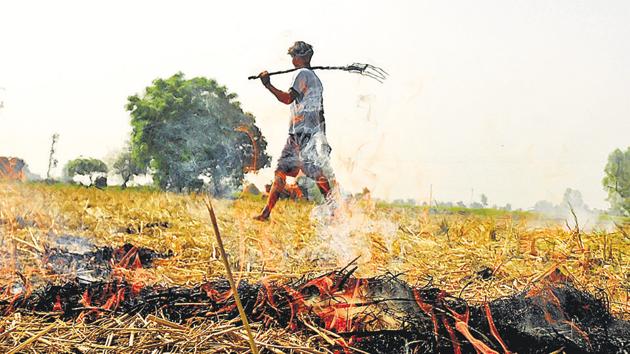Air quality deteriorates, turns ‘very poor’ in Delhi and neighbouring cities
According to data collected from the Central Pollution Control Board, the air quality index (AQI) value in Delhi touched 256 on Friday. The AQI values in Ghaziabad and Gurugram were recorded at 302 and 336 respectively
Pollution levels in Delhi and its neighbouring cities shot up further on Friday as wind speed dropped to almost zero. In Delhi, the air quality had just breached the ‘poor’ level on Thursday. It deteriorated further on Friday.

The air quality in some stations of the national capital such as Bawana, Narela, Delhi Technological University, Mundka, Dwarka Sector 8 and Anand Vihar recorded ‘very poor’ levels of pollution. Gurugram and Ghaziabad also recorded ‘very poor’ air quality.
According to data collected from the Central Pollution Control Board, the air quality index (AQI) value in Delhi touched 256 on Friday. The AQI values in Ghaziabad and Gurugram were recorded at 302 and 336 respectively.
On a scale of 0 – 500, an AQI value between 200 and 300 is considered to be ‘poor’, while a value between 300 and 400 is considered to be ‘very poor’. Anything beyond 400 is considered ‘severe’. Delhi usually encounters ‘severe’ air quality in November. In the winter of 2017, Delhi encountered a week-long spell of smog following which the AQI hit a peak of 486 on November 9.
“Pollution levels are shooting up primarily because of unfavourable meteorological conditions. First, the wind speed was recorded at zero during most of the time since Thursday. Second, when wind speed picked up, it was coming from northwest direction, where stubble burning is going on,” a senior official of the CPCB said.

The situation prompted Delhi environment minister Imran Hussain to write a letter to Union environment minister Harsh Vardhan on Friday, wherein Hussain requested Vardhan to direct neighbouring state such as Punjab, Haryana, Rajasthan and Uttar Pradesh to step up measures to control stubble burning, and in turn, air pollution.
“I have also requested Harsh Vardhan to convene a meeting at his level in this regard,” Hussain said.
According to data, local pollutants are not getting dispersed and are getting accumulated due to low wind speed. As a result, pollution levels are shooting up.
“The levels of particulate matter – both coarse natural dust and ultrafine particles that are emitted by vehicles, industries and garbage burning – are shooting up. While the level of PM10 (coarse dust particles) shot up 2.7 times above the permissible limits, the level of PM2.5 (ultrafine particles) was at least two times above the safe limits at around 6 pm,” said a senior official of the Delhi Pollution Control Committee (DPCC).
The air quality level had turned poor on September 29 after a gap of almost two months, soon after the rains stopped. Monsoon withdrew from Delhi on October 1. On October 2, the air quality had turned poor. The air quality turned better for just one day on October 3, after which it turned poor again from October 4.
“Such changes in pollution levels are normal during this time of the year. It is the transition phase from monsoon to winter. Air becomes dry and velocity is almost zero. As a result, local pollutants do not get dispersed and pollution builds up. This will continue till wind speed picks up,” D Saha, former head of the CPCB’s air quality laboratory, said.

Stay updated with all top Cities including, Bengaluru, Delhi, Mumbai and more across India. Stay informed on the latest happenings in World News along with Delhi Election 2025 and Delhi Election Result 2025 Live, New Delhi Election Result Live, Kalkaji Election Result Live at Hindustan Times.
Stay updated with all top Cities including, Bengaluru, Delhi, Mumbai and more across India. Stay informed on the latest happenings in World News along with Delhi Election 2025 and Delhi Election Result 2025 Live, New Delhi Election Result Live, Kalkaji Election Result Live at Hindustan Times.





